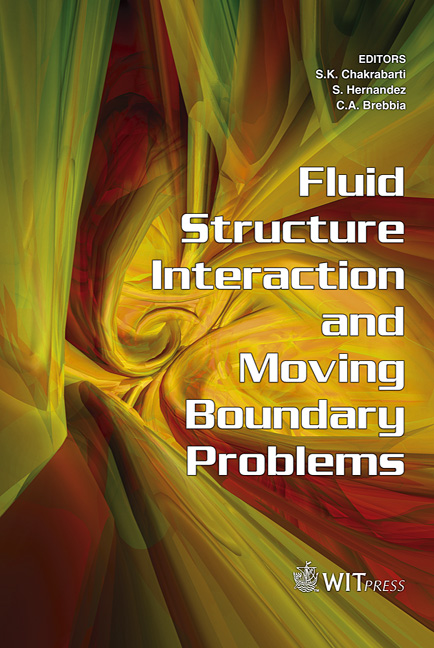Development Of The Coupled MAZ/FLEX Code
Price
Free (open access)
Transaction
Volume
84
Pages
10
Published
2005
Size
543 kb
Paper DOI
10.2495/FSI050011
Copyright
WIT Press
Author(s)
C. K. B. Lee, V. Pereyra & D. Vaughan
Abstract
This paper describes an initial study of coupling of the CFD code MAZ to the CSD code FLEX. Our first step in this study is to introduce moving boundaries into MAZ. We will show, in a Test Problem, that MAZ is able to handle highly deformed boundary cells with aspect ratios approaching 10 at some locations. The numerical accuracy of the resulting MAZ solution is reduced due to the large aspect ratios but the code continues to run without stability problems. The successful development of this capability in MAZ was followed by the formal coupling of the two codes. To this end, we developed a loose-coupling algorithm that subjects the FLEX structural model to MAZ blast pressures and modifies the MAZ model geometry and boundary velocities by the FLEX structural motions. We selected a simple Test Problem to verify both the new MAZ-MB (MB stands for moving-boundary) code and the coupling implementation. Our Test Problem consists of a 1’x 1’ x 6’ long by 1” thick steel box containing a small HE charge at one end. The explosion of the charge generates a reverberating shock in the box. We will present results and the problems we encountered as the surfaces of the box expand according to the local driving pressures. These two large codes run independently, interchanging messages that communicate times, geometry, pressures and velocities. The coupled codes can run synchronously (using the minimum required timestep) or with different timesteps, communicating only when the faster integration reaches the time corresponding to one step of the slower one. Since the meshes of the two codes at the boundaries, where information is transferred, cannot be assumed to be equal, an interpolation process is included. The deformation of the steel box is presented. We conclude the paper with a list of recommended future efforts. Keywords: CFD, CSD, coupling, blast and shock, structural deformations.
Keywords
CFD, CSD, coupling, blast and shock, structural deformations.





